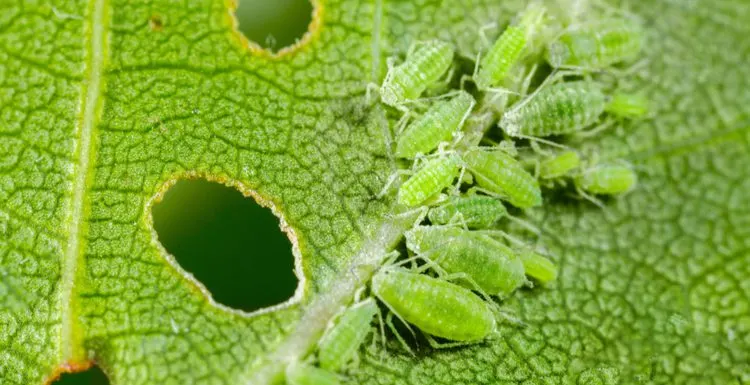Aphids can quickly get out of control and ruin your plants.
If you would like to learn how to get rid of aphids, we have seven steps for you to follow. We’ll cover each of them in detail, things to consider, and more.
Got Aphids? Don’t Worry
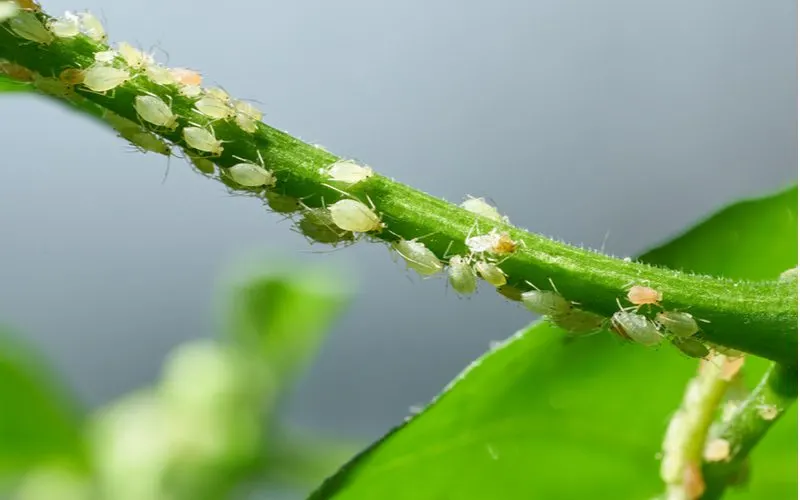
Aleksandr Rybalko/Shutterstock
Getting rid of aphids involves more than just removing the aphids from your plants. It’s also essential to make your plants less attractive to aphids to prevent future outbreaks.
Fortunately for you, getting rid of them is fairly easy and can be summed up in 7 simple steps:
- Remove aphids from your plants
- Add aphid-eating insects to your garden
- Control ants
- Keep your plants watered
- Don’t over-fertilize your plants
- Grow aphid-repellant and aphid-trapping plants around your yard
- Kill overwintering aphid eggs on plants
How to Get Rid of Aphids in 7 Steps
These seven steps will show you how to get rid of aphids and keep them away from your most valued plants.
Step 1: Remove Aphids From Your Plants
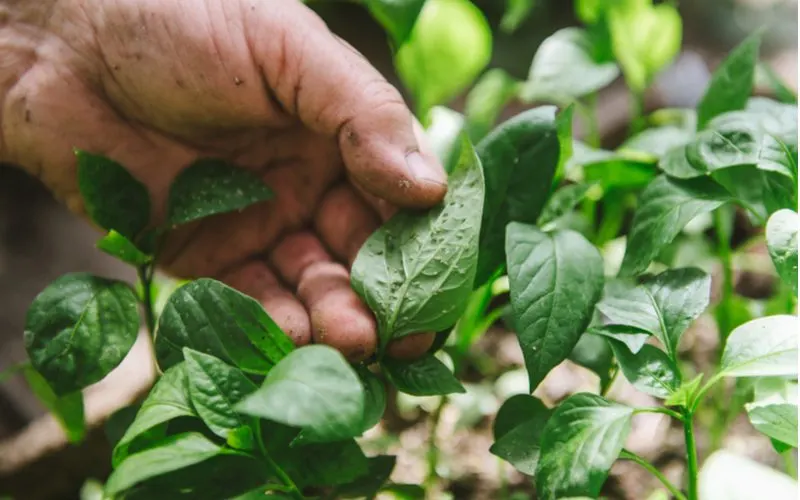
Helen Sushitskaya/Shutterstock
The first step in getting rid of aphids is to remove them from your plants. There are several different products that the Old Farmer’s Almanac suggests to use to remove them:
- Water: You can spay aphids off your plants with water. They usually won’t find the same plant again, but they may take up residence on another valued plant.
- Insecticidal soap: destroys cell membranes and suffocates aphids, washes away honeydew and sooty mold from leaves.
- Horticultural oils: Suffocates aphids and their eggs.
- Food-grade diatomaceous earth: Dehydrates the insects. Sprinkle on leaves and reapply if it rains.
- Isopropyl alcohol: Alcohol suffocates aphids. Mix equal parts 70% alcohol and water (or 1 part 95% alcohol to 1.5 parts water) and spray on affected leaves.
- Flour: Flour constipates and kills your aphids.
- Neem oil: Repels insects, reduces feeding, and interferes with their hormones, so they lay fewer eggs.
- Water and dish soap: Soap dissolves insects’ exoskeletons and causes them to dehydrate. Add a few drops of dish soap to water and wipe or spray the leaves. Reapply every two to three days for two weeks.
- Water, dish soap, and cayenne pepper: Add a pinch of cayenne to your water and dish soap mixture for more repellant power for any future aphids that might think your plant looks tasty.
Always be sure to test the mixture on a small area of your plant first to make sure your plant doesn’t respond negatively to the mixture, especially with soaps and alcohol.
Also, be sure to add the mixture in the early morning or late evening so that the sun doesn’t burn the plant. This is especially important when using alcohol.
Step 2: Add Aphid-Eating Insects to Your Garden
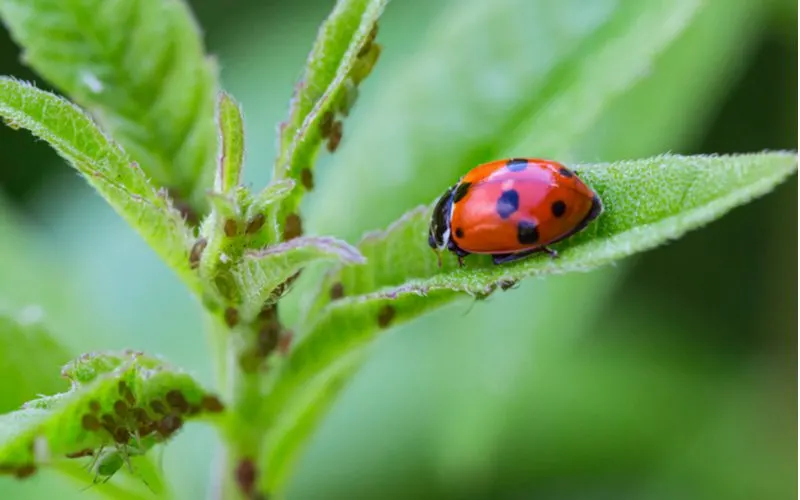
Cherryyblossom/Shutterstock
When you have aphid-eating insects in your garden, they’ll keep your insect population under control. Some local hardware and gardening supply stores keep them on hand, or you can order a population of helpful insects online.
Some insects whose adults or larvae feed on all or parts of aphids include:
- Ladybugs
- Lady beetles
- Lacewings
- Parasitic wasps
- Damsel bugs
- Big-eyed bugs
- Hoverflies
However, introducing these insects to your garden isn’t enough to keep them around. You will want to have plenty of the plants they love to keep them from flying to someone else’s garden.
- Umbels (dill, fennel, Queen Anne’s lace)
- Single-headed blooms (cosmos, black-eyed Susans)
- Clustering florets (lantana, basil)
- Pollinator-friendly plants (coneflower, aster)
Step 3: Get Rid of Ants

AlexBuess/Shutterstock
Interestingly, aphids farm ants to use as their personal security guards. They secrete a sweet sugar substance called honeydew that ants like to eat, so ants hang around aphid colonies waiting for a honeydew treat and guard their aphid chefs against insects that might eat them.
Aphids also have a chemical on their feet that subdue the ants and make them less likely to leave their leaf. Certain ant species will even store aphid eggs in their homes to help them survive the winter.
If you get rid of ants around your yard, you will remove one of your aphids’ best protectors, leaving them vulnerable to insects and providing less protection for overwintering eggs.
Step 4: Keep Your Plants Watered
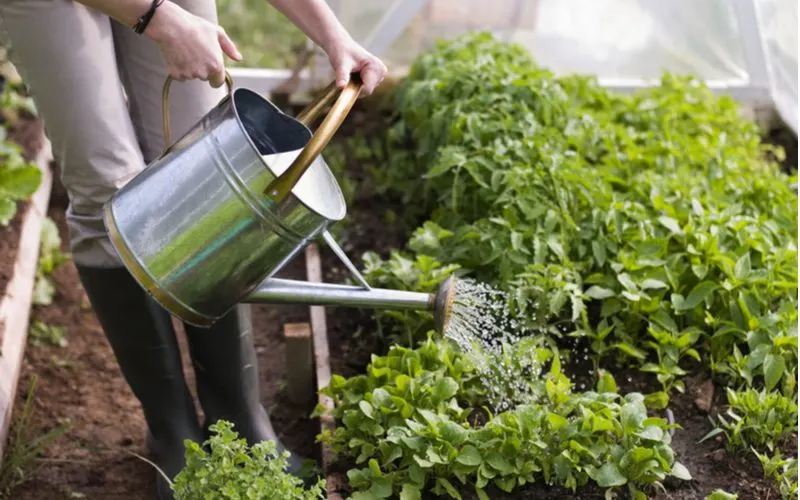
Dusan Zidar/Shutterstock
Some plants have natural chemicals that help protect against pests like aphids. Plants are more susceptible to pests like aphids when they are stressed.
Keeping them watered during the summer helps your plants have the strength to produce the chemicals they need to fend off aphids by themselves.
When you under-water your plants, they become tastier as their sugar and nitrogen levels increase. Additionally, concentrated food provides more energy for aphids in a shorter amount of time.
Step 5: Don’t Over-Fertilize Your Plants
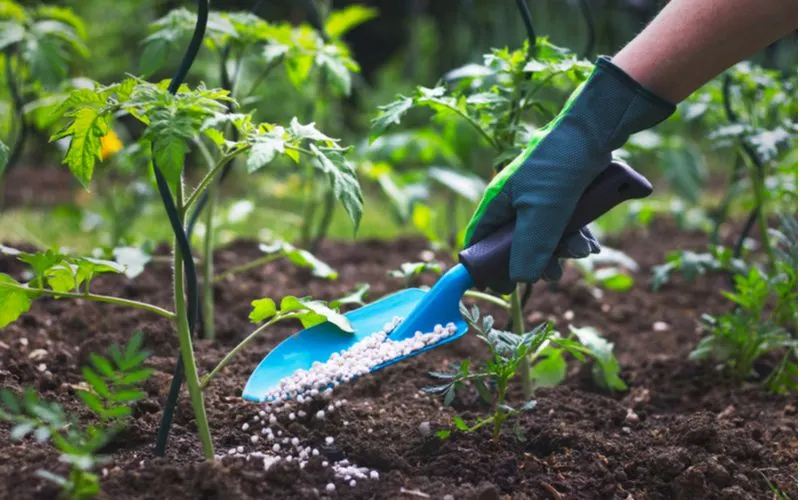
Encierro/Shutterstock
When you over-fertilize your plants, the excess nitrogen gives them a new flush of tender growth that attracts aphids.
A slow-release fertilizer keeps your plants growing steadily during the growing season without attracting aphids.
Step 6: Grow Aphid-Repellant Plants Around Your Yard
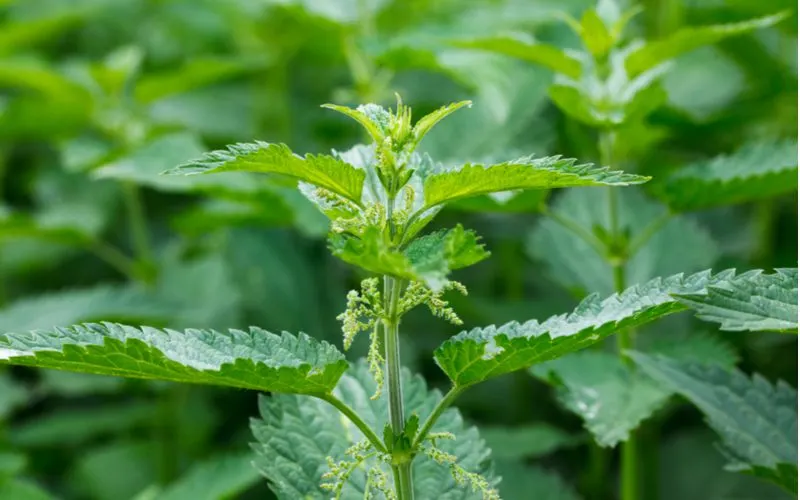
Nada54/Shutterstock
Companion planting can help keep aphids away from your plants. Companion planting involves both repelling and trapping them.
Use these plants to repel aphids so that they stay away from plants growing nearby:
- Catnip
- Garlic
- Chives
- Dill
- Fennel
- Cilantro
- Peppermint
Aphid-trapping plants attract these insects, which allows you to dispose of the aphids or even sacrifice the entire plant before they can attack other plants.
Be sure to check your trap plants regularly so that the aphids don’t have a chance to multiply and infect other plants. Such plants include:
- Mustard
- Nasturtium
- Calendula
- Nettle
- Zinnias
- Dahlias
- Cosmos
- Asters
- Marigolds
Step 7: Kill Overwintering Aphid Eggs on Plants
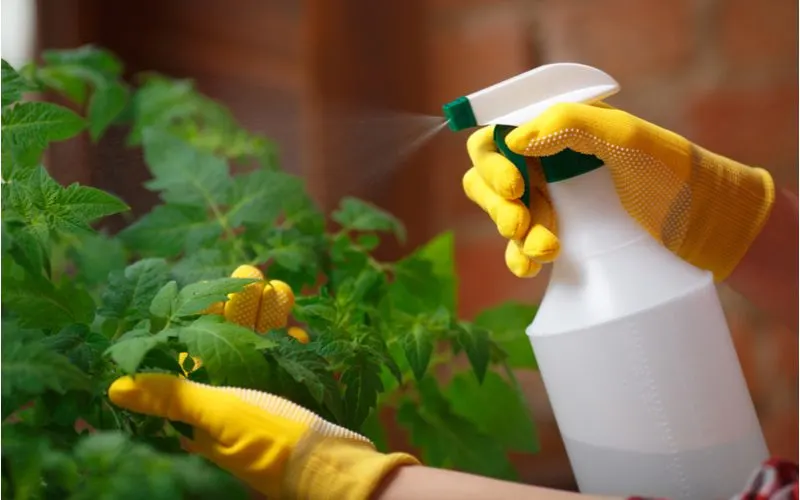
Lyashenko Egor/Shutterstock
If you find overwintering aphid eggs on your fruit or shade trees, you’ll want to spray insecticidal soap or horticultural oil on the leaves.
Insecticidal soaps and horticultural oils destroy eggs, so they cannot hatch in the spring and infect your plant. As the popular saying goes, “An ounce of prevention is worth a pound of cure.”
Things to Consider
Keep these items in mind when following the steps above.
- Strangely shaped, curled, stunted, or yellowing leaves could be a sign that you might have aphids.
- Sticky leaves or leaves with honeydew deposits may also indicate an aphid infestation. Check the underside of the leaves to make sure your plant is not infected.
- Remember that aphids can do a lot of damage because they multiply quickly. Most species can develop wings to find a new host when their leaf becomes too crowded. They reach sexual maturity in 7–10 days and can produce 40–60 offspring. If you find aphids in your garden, you want to work toward getting rid of them before the population gets out of control.
- It’s essential to remove aphids from your garden because they can damage plants in multiple ways. They weaken plants, turn plants yellow, cause malformed fruit and flowers, spread viruses between plants, and cause galls on roots and leaves. Additionally, aphid honeydew encourages sooty mold, which blocks light and prevents photosynthesis.
- It’s okay to compost aphid-infected plants away from your garden area because the extreme heat of the compost will kill the aphids.
- Spraying affected plants with water not only washes off the aphids but also rinses away the honeydew, which can encourage sooty mold growth.
So, How Do You Get Rid of Aphids?
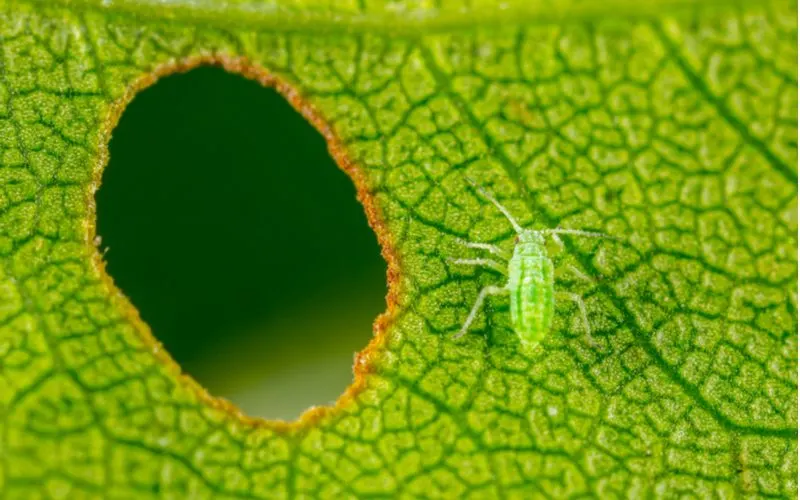
Vera Larina/Shutterstock
It’s easy to understand how to get rid of aphids. The first step is to remove the aphids from your plants or kill them entirely.
Then, keep your valued plants as unattractive as possible to aphids, keep the right balance of insects in your garden, and kill any overwintering eggs. Follow these steps, and you’ll be on your way to an aphid-free garden.

